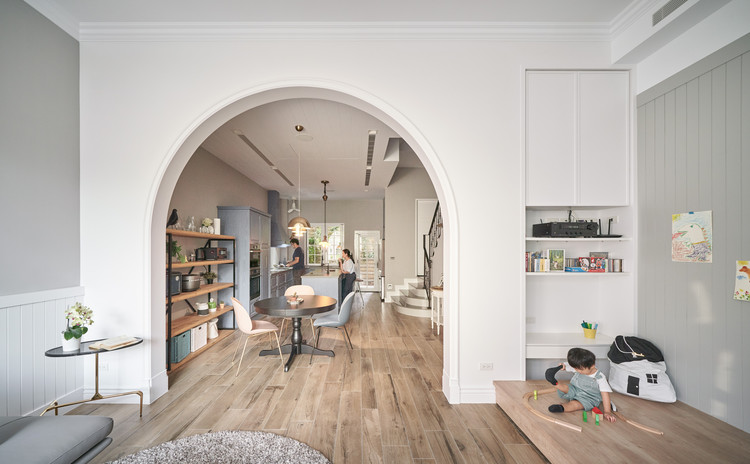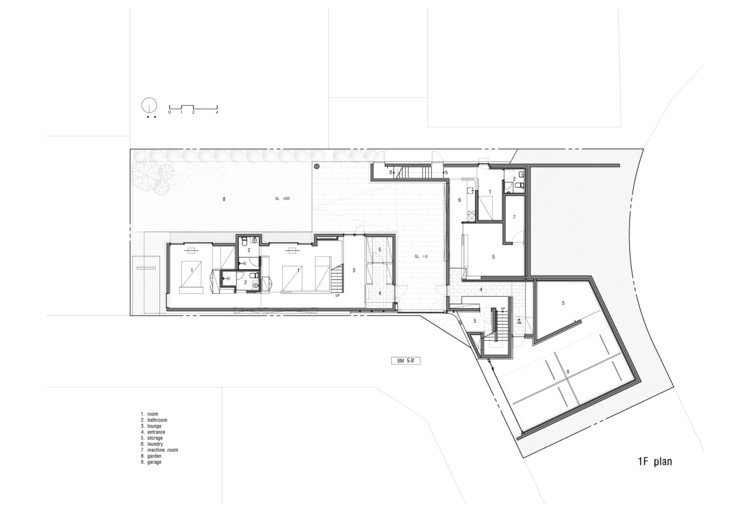The Temple House Make Architects
2015-09-10 17:00
Courtesy of Make Architects
架构师提供的文本描述。坐落在成都中心-中国重要的金融和商业中心之一-的寺庙大厦,这是一家历史悠久的酒店,于2015年7月开业。圣殿是太古酒店的建筑设计师为太古酒店设计的,是太古繁荣住宅集体组合中的第三家酒店,仅次于香港的上议院和北京的对立面。
Text description provided by the architects. Located in the heart of Chengdu – one of China’s key centres of finance and commerce – is The Temple House, a historically-rich hotel that opened in July 2015. Designed by Make Architects for Swire Hotels, The Temple House is the third hotel in Swire’s flourishing House Collective portfolio, following The Upper House in Hong Kong and The Opposite House in Beijing.
设计理念的关键是要使酒店的形式和物质性传达出卓越的设计卓越,具有高度的舒适性和设施,以及一个受欢迎的、嵌入良好的“本地”质量。KatiGhahremani是该项目的合伙人和首席建筑师,她说:“设计不是一个线性的过程。这是一次与太古酒店的反复对话,使这一过程更加有趣。我们可以从整体上看待酒店的设计,这在酒店外部和内部空间的设计之间创造了一种非常动态的关系。“
Key to the design concept was for the hotel’s form and materiality to convey outstanding design excellence, with a high degree of comfort and facilities, and a welcoming, well-embedded “local” quality. Katy Ghahremani, Make partner and lead architect on the project, states: “The design was not a linear process. It was an iterative dialogue with Swire Hotels which made the process much more interesting. We could look at the design holistically and this created a really dynamic relationship between the design of the hotel’s external and internal spaces.”
主要的设计导火索是成都本身的位置-有着丰富的历史、著名的传统和繁茂的景观。太古酒店的总经理布赖恩·威廉姆斯(BrianWilliams)澄清道:“我们希望人们来到成都,拥有独特的酒店体验,这是他们在香港或北京无法拥有的。”这家酒店对成都来说是独一无二的,在成都也是独一无二的。“
The main design trigger was the location of Chengdu itself – with its rich history, celebrated traditions and lush landscape. Brian Williams, Managing Director of Swire Hotels, clarifies: “We want people to come to Chengdu and have a unique hotel experience, one they couldn’t have in Hong Kong or Beijing. The hotel is unique to Chengdu, and unique in Chengdu.”
Courtesy of Make Architects
酒店采用典型的四合院或“四合院”设计,一系列庭院花园与两座L型中高建筑相邻,其中一座可容纳100间酒店客房,另有42间服务公寓。一座修复完好的清朝文物建筑,位于遗址的一角,是酒店的支撑点和入口处。
The hotel embraces a typical Siheyuan or ‘courtyard house’ design, with a sequence of courtyard gardens bordered by two L-plan medium rise buildings – one housing 100 hotel rooms, and the other 42 serviced apartments. A beautifully-restored Qing Dynasty heritage building, at the corner of the site, is the anchor and entrance point for the hotel.
客人通过从遗产建筑内部两层高的庭院进入接待区到达酒店的核心设施,然后通过一段大楼梯进入主酒店,进入景观美化的庭院层。这里有通往酒店客房和公寓电梯核心的有盖路线,以及一系列的餐厅、咖啡馆和其他一般设施。
Guests reach the hotel’s core facilities by travelling through the heritage building’s internal two-storey high courtyard into a reception area, and enter the main hotel by passing down a grand staircase to the landscaped courtyard level. Located here are covered routes to the lift-cores for the hotel rooms and apartments, as well as an array of restaurants, cafes, and other general facilities.
Courtesy of Make Architects
在整个设计过程中,Make和太古酒店对与表面纹理、内部光和阴影效果以及内部视图有关的视觉和体验可能性进行了严格的测试。面对城市的外墙和内部的庭院正面得到了完全不同的处理;前者基本上是实心的,砖砌的,后者是由精致的玻璃制成的纯粹的幕墙,最大限度地将光线反射到院子里。
Throughout the design process, Make and Swire Hotels undertook rigorous testing of visual and experiential possibilities relating to surface textures, internal light and shadow effects, and interior views. The city-facing and internal courtyard-facing facades were given entirely different treatments; the former is essentially solid and brick-built, the latter are sheer curtain-walls of subtly fritted glass, which maximise the reflection of light into the courtyard.
酒店和公寓部分面向城市的墙面受到当地织锦生产的启发,墙面由砖块和黑色实心重建的石材组成。三维编织立面将现代设计与成都传统建筑元素-木材、砖块和踏板-结合起来。
The city-facing brick facades of the hotel and apartment segments were inspired by the local production of brocade, with façade panels formed of brick and black solid reconstituted stone lintel elements. The three-dimensional woven façade combines modern design with the traditional Chengdu architectural elements of timber, brick and step stones.
Courtesy of Make Architects
嵌在庭院层中的轻型水井,在平面上和台阶上有机地形成,让人想起四川陡峭山坡的梯田。在连接一楼接待区和庭院的大楼梯的设计中,梯田效应得到了更显着的回响。
The light-wells embedded in the courtyard layer, organically shaped in plan and stepped in section, are reminiscent of the terraced paddy fields of Sichuan’s steep hillsides when seen from beneath. The terracing effect was echoed even more dramatically in the design of the grand staircase that connects the ground floor reception area to the courtyard.
Courtesy of Make Architects
圣殿是成都大寺文化商业综合体的一部分,这是一个由中海洋土地和太古地产联合开发的大型综合开发项目,位于这个城市众多快速发展的城市地区之一。
The Temple House forms part of Chengdu’s Daci Temple Cultural and Commercial Complex, a large-scale mixed-use development by Sino-Ocean Land and Swire Properties, in one of the city’s many rapidly developing urban areas.
Courtesy of Make Architects
Architects Make Architects
Location Jinjiang, Chengdu, Sichuan, China, 610021
 举报
举报
别默默的看了,快登录帮我评论一下吧!:)
注册
登录
更多评论
相关文章
-

描边风设计中,最容易犯的8种问题分析
2018年走过了四分之一,LOGO设计趋势也清晰了LOGO设计
-

描边风设计中,最容易犯的8种问题分析
2018年走过了四分之一,LOGO设计趋势也清晰了LOGO设计
-

描边风设计中,最容易犯的8种问题分析
2018年走过了四分之一,LOGO设计趋势也清晰了LOGO设计


_john_madden.jpg)









_john_madden.jpg)







_john_madden.jpg)



_john_madden.jpg)





_john_madden.jpg)













































